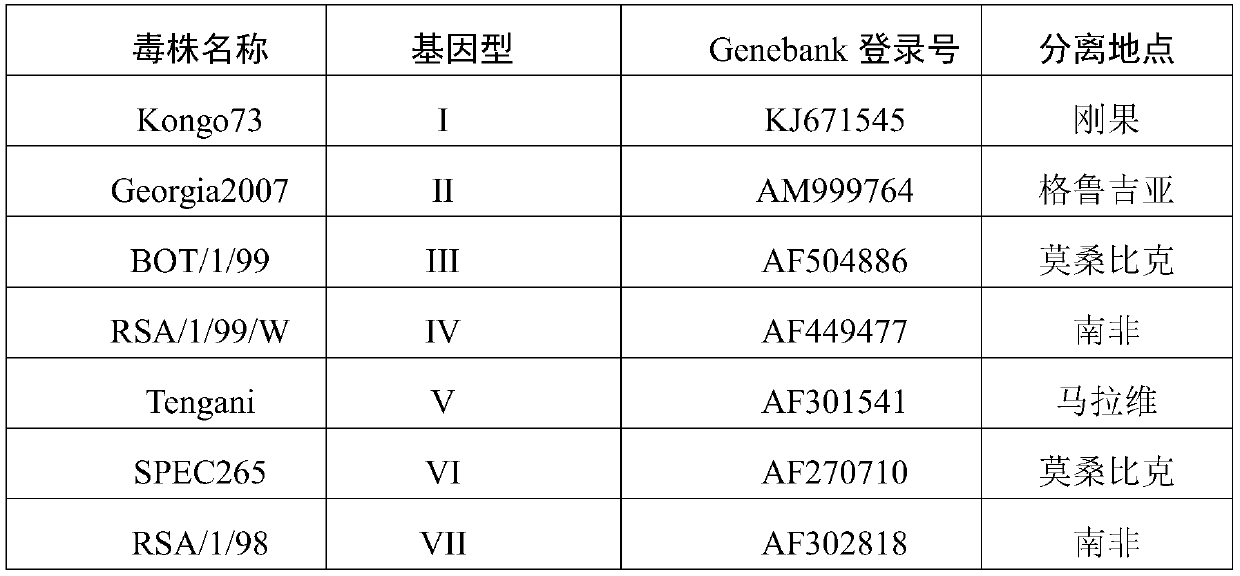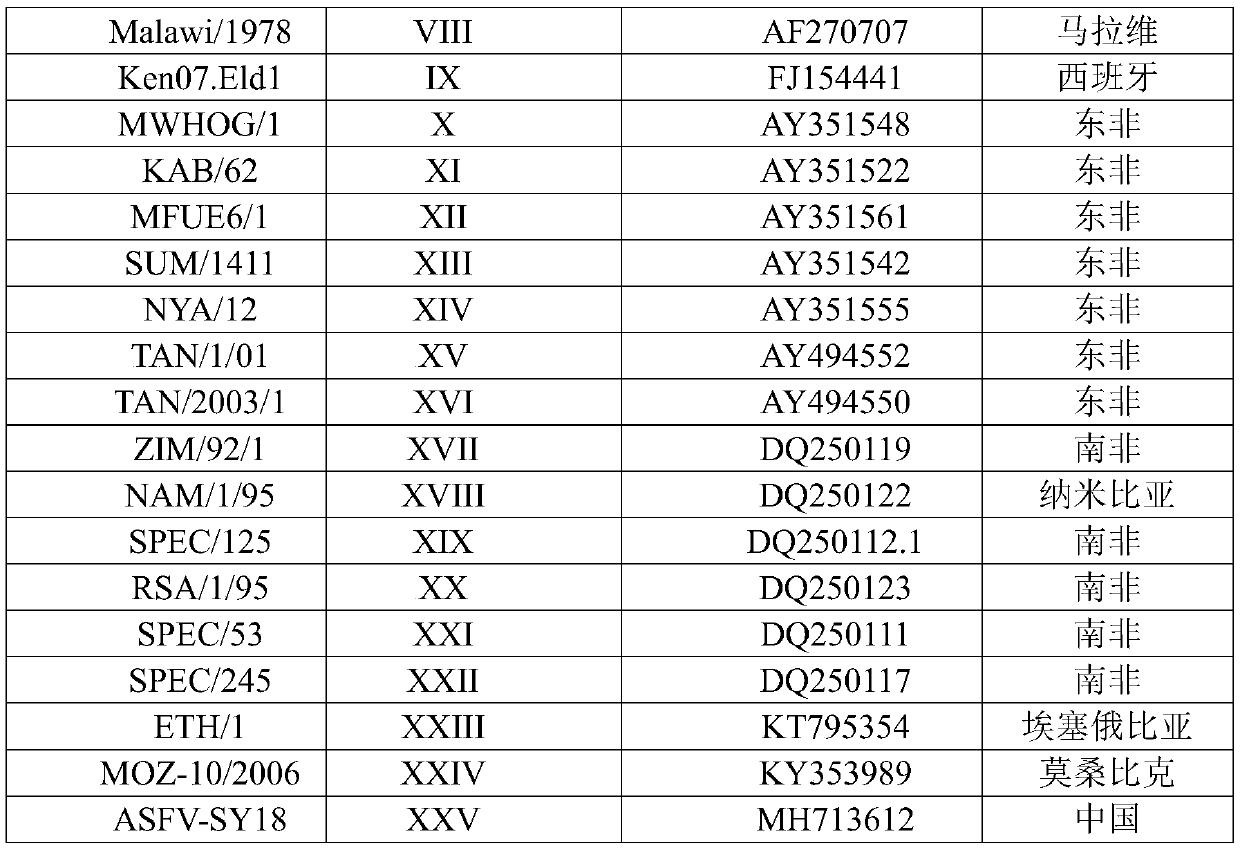African swine fever virus fluorescent type RAA detecting kit
A technology of African swine fever virus and detection kit, which is applied in the field of bioengineering, can solve the problems of complex operation and long time consumption, and achieve the effect of simple operation
- Summary
- Abstract
- Description
- Claims
- Application Information
AI Technical Summary
Problems solved by technology
Method used
Image
Examples
Embodiment 1
[0031] Embodiment 1 The design of a kind of African swine fever fluorescent type RAA detection kit primer and probe
[0032] RAA nucleic acid amplification technology has a certain difference in primer design and conventional PCR primer design. There are two oligonucleotides to form a pair of primers, which specifically recognize the upstream and downstream nucleotide sequences of a nucleic acid target; the length is 30- Between 35 nucleotides (nt), there are no palindromic sequences, continuous single-base repeat sequences, and internal secondary structure regions in the sequence; the Tm value of the primers is not the main consideration in the design; the optimal primer pair needs to be optimized and screened through experiments out. The probe design sequence does not overlap with the specific primer recognition site, the length is 46-52nt, the sequence avoids palindromic sequences, internal secondary structures and continuous repeated bases; there are four modification site...
Embodiment 2
[0040] Embodiment 2 Construction of a recombinant vector of an African swine fever fluorescent type RAA detection kit
[0041] The full-length p72 gene of the ASFV reference gene type II Chinese isolate (accession number: MH713612.1) registered on GenBank was artificially synthesized and cloned into the pUC57 vector as a positive control.
Embodiment 3
[0042]Example 3 Establishment of a reaction system for African swine fever fluorescent type RAA detection reagent
[0043] The pUC57-p72 plasmid constructed in Example 2 was used as a template for constant temperature amplification reaction. Multiple sets of primer-probe combinations were screened, and finally the primer-probe combination described in Example 1 was used as the best combination. The reaction system in the test stage was: add 42.5 μl of hydrolysis buffer to the RAA reaction unit, add 1 μl of 20 μmol / L ASFV-F / ASFV-R, 0.5 μl of 20 μmol / L ASFV-P, and then add 2 μl of pUC57-p72 plasmid DNA as For the template, add 2.5 μL magnesium acetate solution (280 mM) to the reaction tube to start the reaction, cover the lid and centrifuge, mix up and down, centrifuge for 10 seconds, and detect immediately. The reaction program is: 40 seconds at 39°C; 40 cycles at 39°C for 30 seconds, where fluorescence signals are collected.
PUM
 Login to View More
Login to View More Abstract
Description
Claims
Application Information
 Login to View More
Login to View More - R&D
- Intellectual Property
- Life Sciences
- Materials
- Tech Scout
- Unparalleled Data Quality
- Higher Quality Content
- 60% Fewer Hallucinations
Browse by: Latest US Patents, China's latest patents, Technical Efficacy Thesaurus, Application Domain, Technology Topic, Popular Technical Reports.
© 2025 PatSnap. All rights reserved.Legal|Privacy policy|Modern Slavery Act Transparency Statement|Sitemap|About US| Contact US: help@patsnap.com


